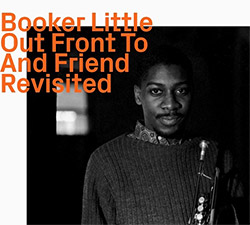
The most interesting thing about this release of two sessions led by trumpeter Booker Little in 1961, is that even over 60 years after the fact this music still sounds not just fresh but still ahead of its time, while also conveying the feel of the era.
The excellent liner notes by Chris May contextualizes this curious phenomenon, referring to an idea elaborated by T.S. Eliot (and coincidentally also a significant concept in post-structuralist critical theory) something along the lines of how innovation and tradition go hand in hand and how the present redefines the past.
The hard musical facts evident on listening to these 13 tracks (seven featuring a three-horn + rhythm section format and six a quintet featuring Little and tenor saxophonist George Coleman) is how creative Booker Little was capable of being while still working within the confines of rather conventional compositional forms. The creativity was in his sound, of course, that clear clarion-call trumpet, nuanced by smears and glissandi and trills, but also in the unexpected sequences of musical episodes alternating soloist and tutti and the building of contrasting sections of sonic architecture, as well as the sensitive alternations of rhythmic material and changes in pace and meter.
It certainly helped to have the caliber of musical collaborators that Little was fortunate enough to be working with: Eric Dolphy, Julian Priester, Don Friedman, Art Davis, Ron Carter and Max Roach in Out Front, and Coleman, Priester, Friedman, Reggie Workman and Pete La Roca in And Friend (the full title of the original release being Booker Little and Friend, the friend referring to the young musician's trumpet). Of all these great musicians, Dolphy stands out the most, lending his innovative language to the sessions and helping propel the music to higher spheres that are still inspiring to listen to today.
Comments and Feedback:
|



